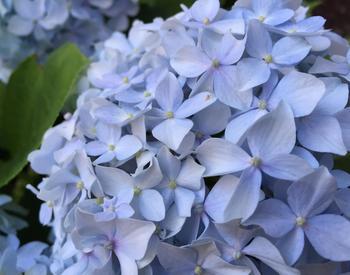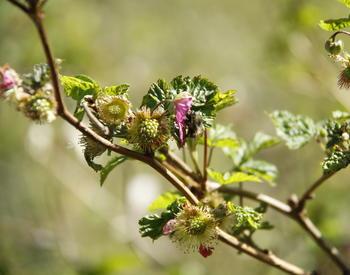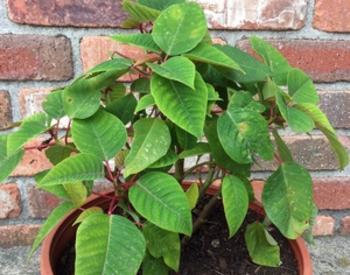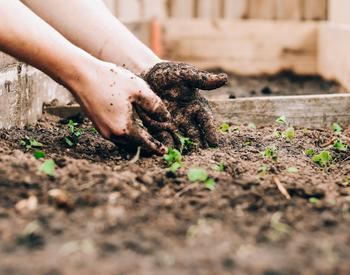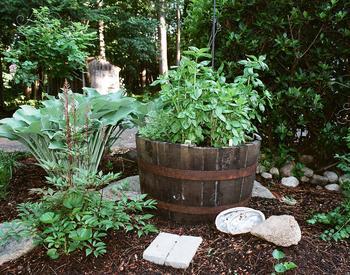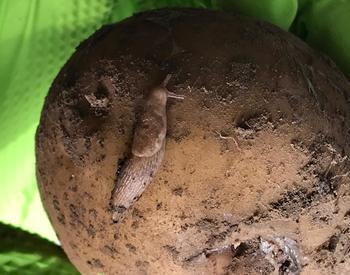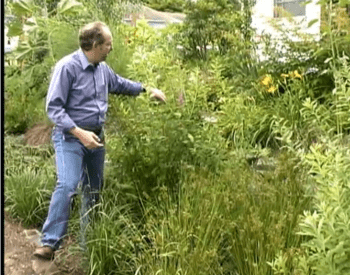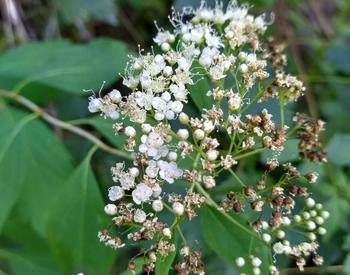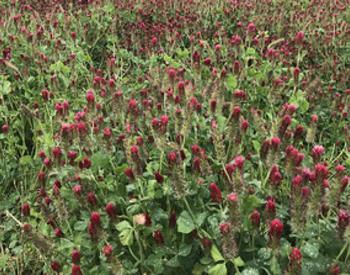For thousands of years, our native flora has adapted to our unique local climate and soil conditions. Our soil pH is slightly acidic overall, and although soils can change from area to area, clay soils seem to predominate. Our patterns of summer dry and winter wet mean that native plants must survive the summer dry months and are adapted to do just that.
So, when it comes to choosing plants for our gardens, for windbreaks, hedgerows, and streamside's, native plants are great choices. Since they evolved here they will survive with minimal inputs of water and nutrients. All of the species discussed below will be able to survive our regional weather and soil conditions. Generally little care is necessary after the first 1-3 year establishment period.
First, let’s talk about suitable native plants for hedgerows. Ideally, they should provide a wind break but not block sunlight to crop areas, and should be ideal habitats for our native birds, butterflies and other pollinating insects, and mammals. Mixed hedgerows will provide an assortment of nesting sites and food sources along with visual appeal. Since recent research has shown that native birds prefer native species both for nesting and food, this makes good sense for wildlife lovers.
For hedgerows I recommend some of the following plants starting with small trees and large shrubs since these are the hedgerow backbone. Good choices include:
- western serviceberry
- Douglas hawthorne
- osoberry also called Indian plum
- blue elderberry.
Smaller flowering shrubs add a lower tier and additional food for birds and butterflies:
- Oregon grape
- oceanspray
- wild rose
- thimbleberry
- mock orange
- red flowering currant.
As a source for winter bird food, add snowberry. Perhaps the best vine is the honeysuckle.
For the herbal layer, consider:
- red columbine
- native violets
- sword fern
- Oregon iris.
For wetter areas, such as near streams or in seasonal seeps, try adding:
- red or white alder
- Western red cedar
- red elderberry
- Douglas spirea
- ninebark
- Pacific crabapple
- willows.
Seasonal wetlands will also support camas.
For gardens, consider any of these above species with the exception of the Douglas hawthorne, which is a little too aggressive in forming colonies than is usually appreciated in garden settings. Consider instead cascara which is a small understory tree in our forests that performs well in garden settings.
Particularly handsome trees are:
- Willamette Valley Ponderosa pine
- Oregon white oak
- Western Red Cedar.
An elegant native shrub is the evergreen huckleberry. Sword ferns perform elegantly in garden settings.
Most of the native flowering plants make excellent garden choices, including:
- violets
- camas
- red columbine
- checkermallows
- wild bleeding heart.
When it comes to forest style plantings, take a look around you to see what already predominates. Good choices are:
- Oregon white oak
- Ponderosa Pine (Willamette Valley Form)
- serviceberry
- cascara
- sword fern
- bitter cherry
- Pacific yew
Also, any of the shrubs and small woodland herbs common to your area.
Finally, make a list of what appeals to you, look up some of these in references or on the Internet, and them make a shopping list to carry with you, whether it is for the Yamhill Soil and Water Conservation District sale or for trips to your favorite retail nurseries. For more information about these species, you are welcome to peruse the information on the Yamhill County OSU website.



